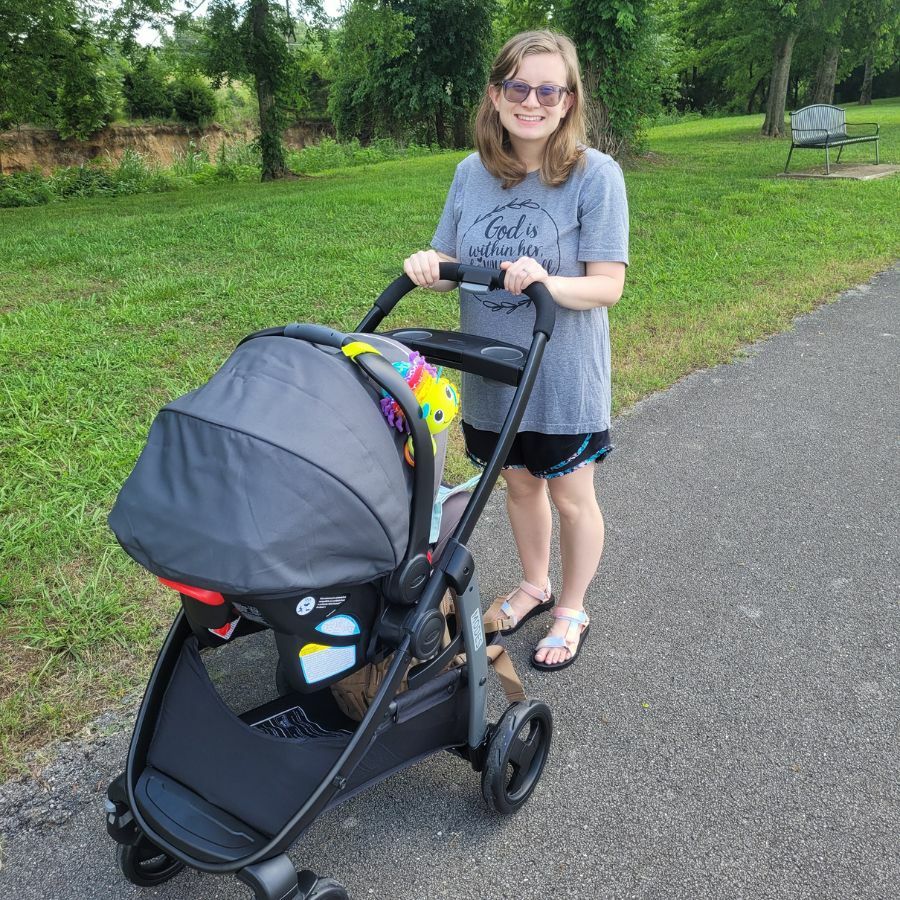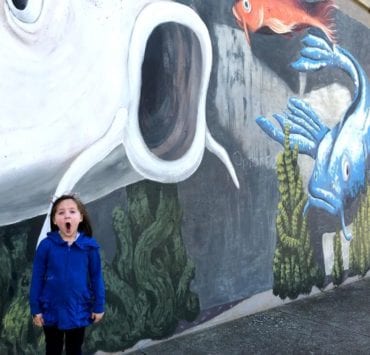The Stain Left Behind by Birth Trauma

Author’s Note: The following story contains graphic descriptions of blood, infant respiratory distress, and birth trauma – please proceed with caution.
Blood so dark it was almost black coated my hand, my blood. Alarm bells had been ringing in my head since I’d started the pushing phase of the delivery process, but until this moment I had dismissed them as the overactive nerves of a first-time mom. As it would turn out, it was only the beginning of a traumatic birth experience that would stain my early motherhood moments as surely as the blood on my hand. For Birth Trauma Awareness Week, I’ll be sharing my story and resources for those that have found themselves in the same boat.
Caught in the Birth Trauma Rapids
After about 18 long hours of induced labor, I finally reached the point that it was time to push. I’d had a foley bulb inserted, two epidural injections (one of which had failed), and vomited, but the thought of finally meeting my son for the first time made all of those things seem like minor inconveniences.
Around 15 minutes of pushing an icy cold feeling washed over my body – a sense that something was terribly wrong and that I wouldn’t be making it out of that hospital bed alive. Despite trying to write it off as nerves of a first-time mom, I screamed not from the pain of childbirth, but from the thought that I wouldn’t witness my son growing up to become a man.
Despite the epidural I felt myself tear, but none of that mattered as the doctor plopped my tiny baby on my chest. Mixed with the excitement of meeting my son, a tiredness like I’d never felt before washed over me. I could barely hold my head up and every few seconds my vision would go black as I tried to take in his delicate features. I cradled my son’s fuzzy head in my hand like a lifeline – anxiously taking in every precious second as that feeling of approaching death grew closer and closer.
Perhaps it was because I was staring at him so intently, or perhaps it was the nerves that I was already fighting, but within seconds I noticed my sweet baby wasn’t crying – and was growing a deep red color. I screamed out for someone to help him and in a moment he was whisked away to the corner of the room, out of my eyesight.
Feeling empty and frantic I turned to look at the hand that had held him just moments ago to see my blood dripping from it to the sheet below. Time seemed to stop in that moment and everything and everyone around me moved slowly while my heart raced on inside me. Exhaustion hit me with the force of a train, and keeping my eyes open to an increasingly chaotic situation around me became the sole focus of my energy.
Holding my eyes open became the hardest chore of my life. The world had slowed down around me, but I was drowning in a raging river of blood – captive to the rapids and often pulled under. One thing and one thing alone helped me stay mostly conscious during this fight. No one but me had noticed my baby not crying, no one but me would ever be able to take care of him like I could. He kept me strong under the water.
I began to scream as loud as I could, screaming from the pain of an internal massage of my uterus, screaming from the pain of the stitches for my second-degree tear, but mainly screaming in the face of death itself – screaming that I would see my son grow up.
During this time the nurses were able to help my son take his first breaths and I was relieved to see him safely in my husband’s arms, healthy and pink. He was wrapped tight in a blood-stained receiving blanket, another more saturated one had been abandoned in the corner – the blood from my hemorrhage so potent that it had stained my son and everything he touched in the minutes after delivery.
I’d end up calculating that I’d lost approximately 1.33 liters of blood during that time period. Thankfully, my medical team was able to act fast to ensure I would go home with my family. I’d later experience an infection that led to a 103-degree fever and excruciating pain in the aftermath of the internal fundal massage and stitches, but the real consequences of that day awaited me in the weeks and months after I gave birth.
Memories that Follow and Haunt
Once I returned home with my little family life continued on for us, but the ghosts of our childbirth experience would not be soon forgotten.
I’d wake up slick with sweat convinced it was blood and that I was again hemorrhaging. In fact, in the months after giving birth I found myself deep within the grips of a postpartum mood disorder – specifically postpartum post-traumatic stress disorder (PTSD).
I’d often have vivid and violent thoughts of something terrible happening to me and my baby. The thoughts were so real and so disturbing that I’d often have to physically shake my head to clear away the images. For the first time in my life, I’d get unbearably hot and sweaty in hospital-like settings. I’d feel nothing but worry and fear when friends went into labor with their own children.
According to Postpartum Support International, approximately 9% of women experience postpartum post-traumatic stress disorder following childbirth. While obvious birth trauma scenarios may come to your mind, trauma can include anything that is traumatic to you. This can include:
- Unplanned cesarean birth
- Preterm labor/NICU stay for baby
- Use of forceps or vacuum
- Shoulder dystocia or injury to baby
- Birth injuries to mothers like postpartum hemorrhage, tearing, cardiac disorders, etc.
In the aftermath of these events mothers are left reliving what should have been the most joyous moments of their life, as one filled with dread and regret instead.
Through the lens of birth trauma, families are left questioning when and if they should ever have another child. They’re left looking back at the birth of their child with a chilling sense of dread instead of the joyous celebration that it should be. They’re left to look back at the photos from that day and see the things they missed, the things that were taken from them.
Reclaiming Your Motherhood After Birth Trauma
The first steps to reclaiming your motherhood should likely include the help of a local mental health provider that specializes in perinatal mental health disorders. You can find a local list here.
Another helpful step towards healing is finding your tribe of mothers to support you in your journey. You can check out local mom clubs and groups here. I’d especially recommend stopping by the Mother Offering Mothers Support group for a free community group that’s led by an experienced mother-baby nurse and a licensed professional counselor.
Lastly, I’d invite you to switch your perspective on the experience from all the things that were taken from you to all the things you survived. You are capable of accomplishing hard things and overcoming the impossible. Join the ranks of us that have survived and pulled ourselves from the trenches. Honor the woman that died that day, the woman you’ll never again be. Be proud of your journey and the mountains you’ve climbed to get here and enjoy the view from the peaks, you’ve certainly earned it.

You May Also Like…
Lauren Lee is a longtime dog mom transitioning to life as a rookie human mom. She is married to her college sweetheart, Josh, and they welcomed their son, Oliver, to the world in June. Lauren is a Jacksonville State University alumni and has been a published writer since she was sixteen. In her free time, Lauren enjoys reading, writing, knitting and hiking with her two dogs.





